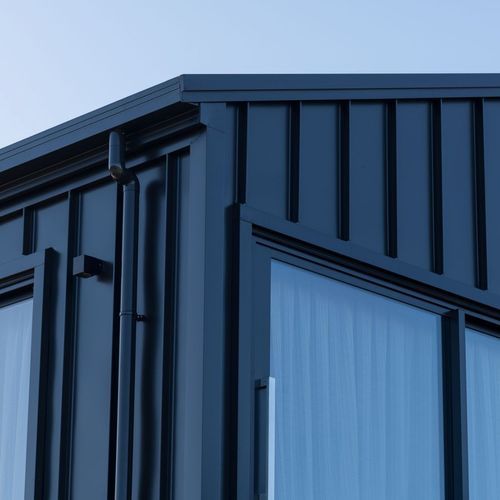Translucent Roofing & Wall Cladding
There are two main profiled translucent ranges, polycarbonate and fibreglass. Polycarbonate is generally used on domestic properties, being thin and highly translucent but limited in length due to the high thermal coefficient, i.e. it expands and contracts much more than steel roofs. Fiberglass (GRP) profiled roofing contains fibres within the resin, which makes the product less translucent but more stable. Generally GRP is thicker and available in long lengths which suits commercial installation.
When using translucent roofing consideration for future maintenance and fire should be given. Polycarbonate roofing is often installed without netting on residential projects, however commercially a fall prevention netting such as Ausmesh should be used. This ensures future maintenance can be carried out at roof level without the risk of falling through a clearlight. There are trafficable GRP products on the market which can be walked across, however they still have a serviceable life and records should be kept to ensure they are deemed non-trafficable after the warrantied lifespan of the product.
Clearlights perform differently in fire depending upon the product. Polycarbonates generally achieve a Group 1-S rating, which means there is very little spread of smoke and flaming droplets, which can cause a fire to spread.
Fibreglass is typically in the Group 3 category, with some Group 2. 1 is the best and 4 is the worst. Please consult a Fire Engineer for the appropriate product for your project.
Translucent Wall cladding
In addition to the GRP and Fibreglass profiled sheeting used in roofing there are a plethora of systems with flat sheet and extruded thermoplastic multi-cell polycarbonate panels, such as twin wall products, Thermoclick, Rodeca.
- CategoryWall Panels & Cladding , Glass Roofing, Polycarbonate Roofing
More from
Iconic Cladding










About the
Seller
- ArchiPro Member since2024
- More information







